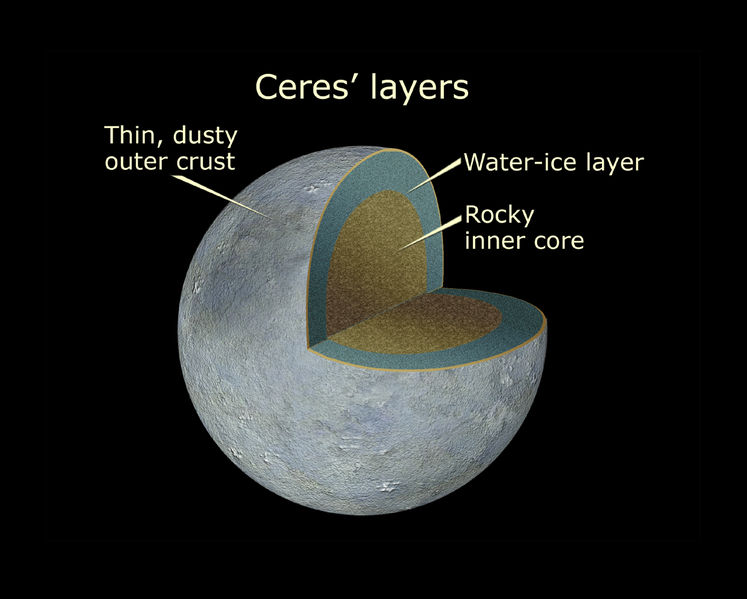File:Ceres Cutaway.jpg

Size of this preview: 747 × 599 pixels. Other resolutions: 299 × 240 pixels | 598 × 480 pixels | 957 × 768 pixels | 1,200 × 963 pixels.
Original file (1,200 × 963 pixels, file size: 358 KB, MIME type: image/jpeg)
File history
Click on a date/time to view the file as it appeared at that time.
| Date/Time | Thumbnail | Dimensions | User | Comment | |
|---|---|---|---|---|---|
| current | 17:09, 9 September 2005 |  | 1,200 × 963 (358 KB) | Startaq | |
| 13:46, 9 September 2005 |  | 800 × 600 (37 KB) | Vesta~commonswiki | {{Information| |Description = Cutaway view of asteroid 1 Ceres. Observations of 1 Ceres, the largest known asteroid, have revealed that the object may be a "mini planet," and may contain large amounts of pure water ice beneath its surface. The observation |
File usage
The following 3 pages use this file:
Global file usage
The following other wikis use this file:
- Usage on als.wikipedia.org
- Usage on ast.wikipedia.org
- Usage on bg.wikipedia.org
- Usage on de.wiktionary.org
- Usage on fi.wikipedia.org
- Usage on fr.wikipedia.org
- Usage on hu.wikipedia.org
- Usage on id.wikipedia.org
- Usage on ko.wikipedia.org
- Usage on nds.wikipedia.org
- Usage on nl.wikipedia.org
- Usage on nl.wikibooks.org
- Usage on no.wikipedia.org
- Usage on pl.wikipedia.org
- Usage on pnb.wikipedia.org
- Usage on pt.wikipedia.org
- Usage on ro.wikipedia.org
- Usage on tl.wikipedia.org
- Usage on ug.wikipedia.org
- Usage on ur.wikipedia.org
- Usage on zh.wikipedia.org









